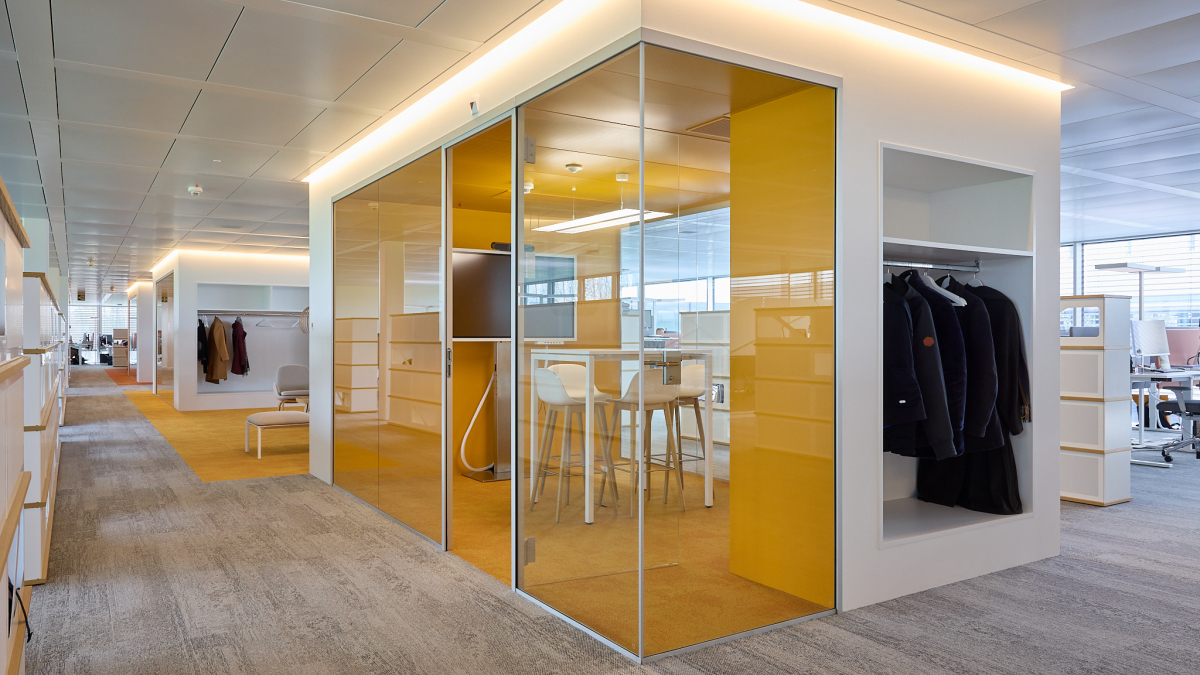05.06.2023
Special Report
Interview - Pierre-Yves Martin - Facing the impact of its new workspace, the ECA has rethought its practices
As part of its move to brand new premises, the “Etablissement Cantonal d'Assurances” (ECA) tmade sure they provide in-depth support for this major change, in order to enable users to adopt new ways of collaborating and to operate in a fundamentally different working environment. This process was initiated well before D-Day to ensure the smoothest possible transition.
Pierre-Yves Martin, ECA Human Resources Manager, talks to us about this transition, which is a milestone in the life of the company and in a career as an HRM.
Haja M. Rajaonarivo: Thank you Pierre-Yves Martin for agreeing to share with us what has been in a way a real adventure, in any case a project of considerable importance for the ECA. First, remind us of the context of this transformation.
Pierre-Yves Martin: Indeed, moving into a new headquarters, built from scratch, was a long-term project that began as early as 2014. At that time, the first reflections on the subject formed part of the inception of a business strategy aimed at changing the organization in its culture, in its structures as well as in its approach to digital technology. It was basically a matter of bringing together on a single, brand new site the head office employees whose offices were then distributed in Pully in 5 distant buildings, some being old rental units which had been converted into offices, others even occupied a former maternity ward.
And in this context, what were the impacts of this move?
It was an opportunity to change practices on several levels: in terms of management, corporate culture and work organization. First there was the move from individual offices, essentially divided into closed spaces grouping small groups of people, towards open-plan workspaces, where large teams coexist on the same open surface. This had an effect on the modes of collaboration and the need for rules of cohabitation. And then at the level of the managerial culture we had prepared the ground by working upstream on the notion of giving room to error as well as on the culture of feedback, in order to support the transition in a more serene way and to make the company culture evolve in the long term.
So upstream work was essential?
Yes, absolutely. At the start of the project in 2016, head office employees were invited to participate in various working groups, addressing themes such as mobility, workspaces, sport & fitness or catering. Then in a perspective of support for change, we worked on their themes from the angle of the advantages linked to change, the problems it raised and the fears it aroused, it was possible to propose answers and pragmatic solutions. A microsite has been created in order to be able to keep all employees informed of the progresses of the various groups. This gave then opportunity to present images of the planned developments and to avail an FAQ section. We also carried out some surveys or interactive reflections on some of these themes.

Just before the microsite went live, workshops brought together working group ambassadors on the one hand and managers on the other, addressing the strengths and sensitive points to be highlighted. In particular, it was important to think about the living-together rules to ensure good cohabitation: managing the noise of conversations, the risk of frequent interruptions in open space, the use of spaces dedicated to interviews... this, for example, led to the usage of table easels displaying messages, in a humorous form, which, for example, indicates to colleagues if you are available or if you wish to focus for a moment on your work.
An electronic newsletter was also created, providing information on the progress of the project, and site visits were organized at 2 different stages, during the construction phase and once the interior fittings were completed.
Without a hitch! On the 1st day of moving in, on May 1st , 2022, the entire management, the Staff Association Committee, the human resources and IT partners were on hand to welcome a first wave of nearly 250 employees. in the new Grangettes building. Everyone was then able to take ownership of their desks, because we have maintained an individual workplace for each employee.
And now more than a year after moving into your new building, what do you observe in the ways of working?
Compared to the old configuration where the entities were spread over several buildings with often small offices regrouping only a handful of people, the new layout in open-plan offices has seen the development of new habits: there are a lot more contacts and interactions, direct communication is easier, we move around to see people instead of e-mailing each other and then the simple fact of meeting colleagues more easily often makes us think of topics that we have to discuss with them, or can boost ideation more easily… The layout of the break-out areas and the restaurant also facilitates meetings. With such a significant change, it was decided that in the new workspace the teams would keep sitting in the same physical space and that everyone would keep a dedicated workspace. But this is also done with a "clean-desk" policy. We deliberately did not take the step of mutualize the entire workspace where each one chooses each day which desk they sit at. This being said, with the establishment of a dynamic teleworking policy, this givess the possibility of doing some roaming by occupying free desks from time to time during the absence of the "tenants". It is an approach that I gladly use to be more often in contact with different people and which is facilitated by physical absences due to combination of part-time work, home-office, training or even traveling.
Moreover, among the preliminary measures taken, a few years before the move, we had reviewed the home-office policy which allows one day of remote work per week. Colleagues can actually work from home but also within our network of agencies spread throughout the canton and in which some desks for “visitors” have been set up. It also allows for new dynamics and interactions between headquarters and branch staff.

These developments, in connection with the COVID period, have led us to raise managers' awareness of the points of attention for the practice of teleworking. Leadership development, a caring approach, adaptability and flexibility as well as encouraging more collaboration were among the topics discussed.
A committee working on "living together" has been formed and deals with subjects such as the use of meeting spaces to hold discussions, attention to others, respect for work spaces, conversation noise management, etc. We were pleasantly surprised that there were almost no behavioral issues to deal with, but rather logistical issues.
Thank you very much Pierre-Yves for sharing this very interesting experience. So can we say that you are a happy HRM in this new context, thanks in particular to a very well prepared project?
Yes indeed. The preparation, the support put in place for both employees and managers, the very broad participation of all stakeholders through working groups, excellent planning and close monitoring in the move-in and start-up phases have, I am convinced, contributed to making our move a success and, as you understood, the work did not stop there since we have maintained this philosophy of listening, proximity and participation in the implementation of new modes of functioning at work induced by these changes. So yes, I think we can say that I am a very satisfied HRM, who can happily contemplate his coming retirement!



